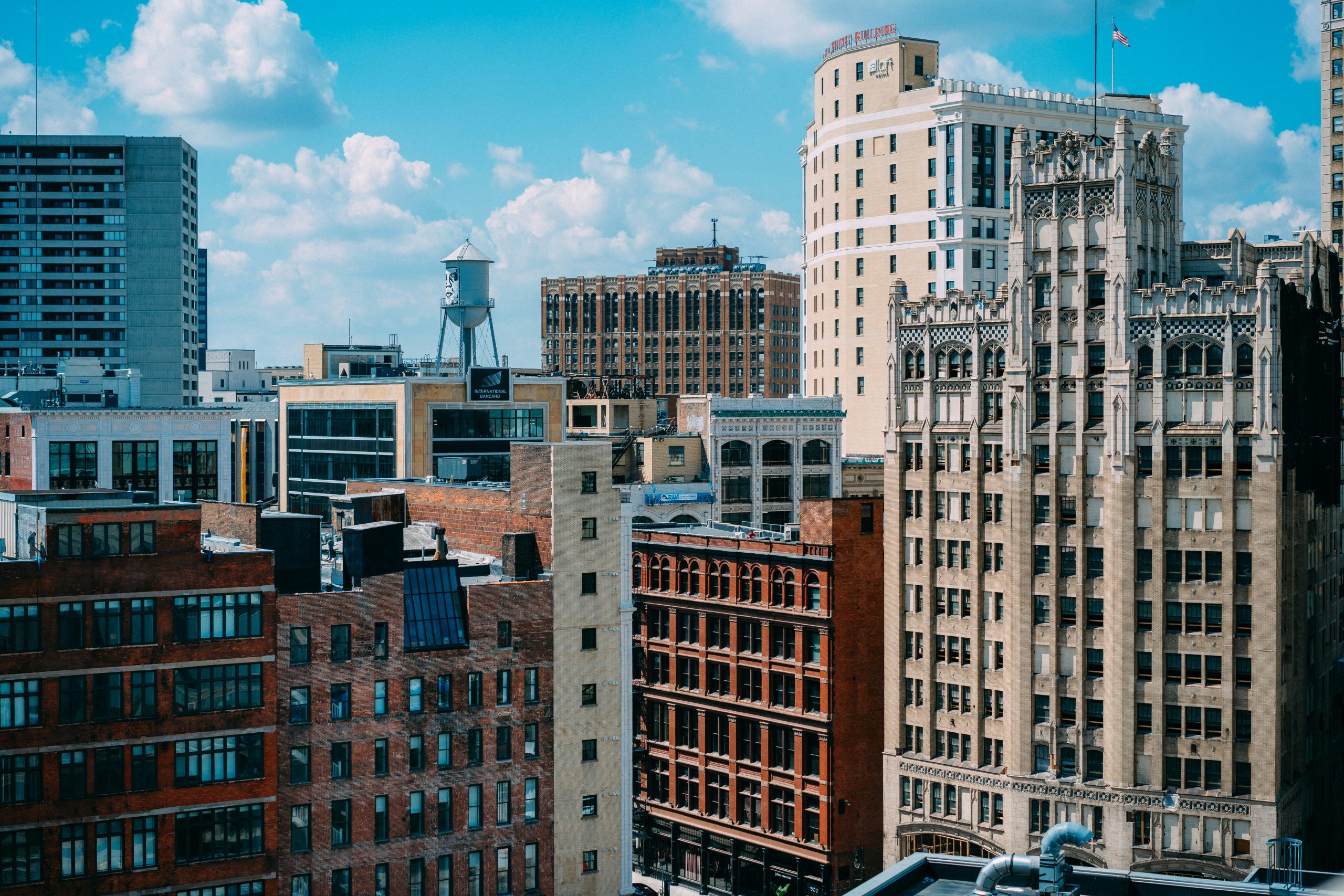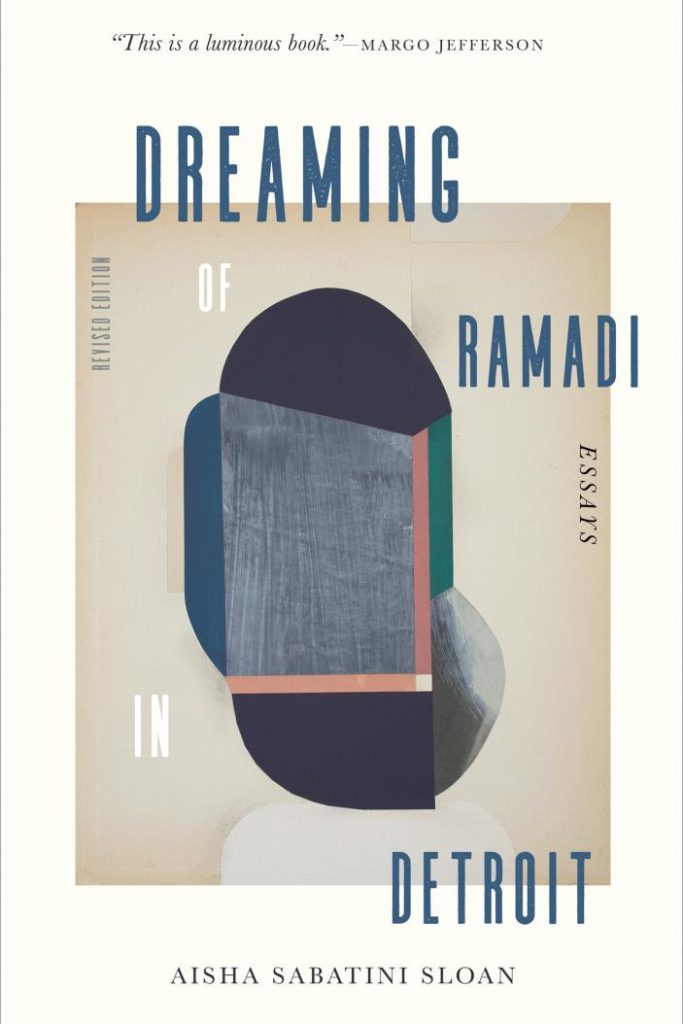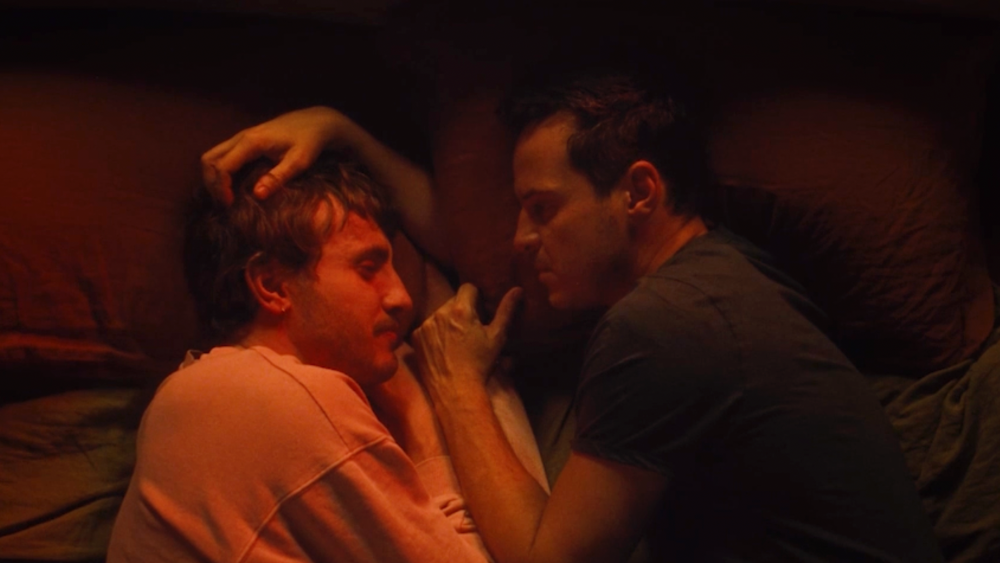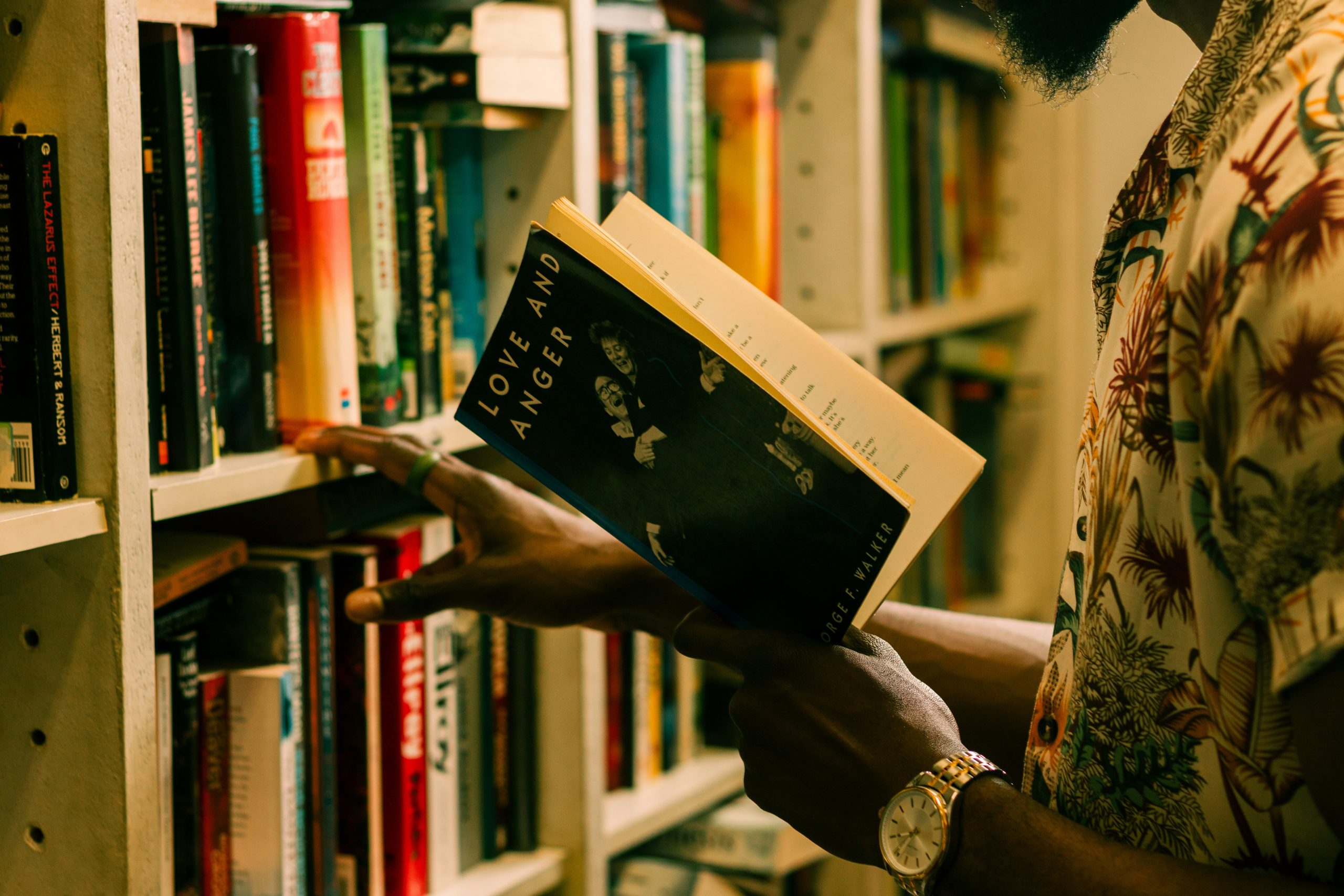interviews
Aisha Sabatini Sloan on Allowing the Space for Perspective
The author of "Dreaming of Ramadi in Detroit" discusses life writing, revision, genre, and art as survival

In Aisha Sabatini Sloan’s revised essay collection Dreaming of Ramadi in Detroit, we encounter a narrator who is compelled to serve as witness. These varied acts of witnessing are how she builds a vocabulary for herself as a daughter, teacher, friend, and writer. Artists are this narrator’s intimate companions—Prince, Richard Diebenkorn, Kiese Laymon, her father. Place becomes the site for all the orbiting they do together and perhaps no place of deeper significance to this narrator than Detroit, the beloved birthplace of her parents. “For my family,” our narrator professes, “Detroit has always been inevitable. It is the place we have been heading back to my entire life.”
Dreaming of Ramadi in Detroit is a collection about the piercing, almost haunting nature of memory. It is also a book in which meditations on Black life and death, teaching, travel, gender, and love are incisively juxtaposed to articulate new questions and curiosities about the contemporary. In Sabatini Sloan’s hands, the essay itself offers a wide aesthetic terrain to tread through such investigations. The form is akin to breathwork throughout these pages in that her prose provides a steadying, capacious rhythm. Her language is precise and exacting but never sterile, never off beat. And the act of return as presented by this revised collection is an opportunity to reconsider the very fragile frame of nonfiction as a category itself. Sabatini Sloan is in a dance with form.
I spoke with Sabatini Sloan over Zoom about the lessons of revision, what it means to learn with and alongside the people we love, and why the question of genre is never really, simply, a question of genre.
Jessica Lynne: In these essays, the narrator wears so many different hats, from daughter and relative, to researcher and teacher, writer and art critic. Visual art and music, in particular, are the pulses of so much in these essays. What opens up for you by training your attention to cultural production in this way?
Aisha Sabatini Sloan: That’s just where the magic happens. There was an interview that Fred Moten gave where he talked about art as an act of survival and the art of survival. It’s an act of constant improvisation to be taking in or noticing where there is danger and where the allies are, and then improvising from there. That reminded me of this quote that I was obsessed with for a long time from Ralph Ellison’s National Book Award speech where he talks about the necessary shape shifting that the Black American artist has to do. I think it’s fascinating to watch how people manage that and how people code their message in different ways. It’s endlessly exciting and exhilarating to look at and to learn from.
JL: You’re the art critic, but you are also the daughter, and that role is a central part of this collection, especially your relationship with your father. It’s a relationship that is never one note. How did you approach writing about your father in this way? Looking back, are there things that you wish you would have withheld, or does it remain the container best suited for talking about this person who shows up for you in many other ways across other projects?
ASS: I think about that especially because I’m in a different moment with my parents as they’re getting older and both doing a lot of thinking about their lives. My dad thinks a lot about his contributions, and it has always been one of the reasons I don’t write as much about my mother. She’s shyer and my dad has always been so responsive and positive when being written about no matter what it is. In some ways, it ends up feeling like a conversation, an extension of a conversation between us. There’s a way in which I feel like he helped me. He really encouraged me to write about him and he loves witnessing people. He’s always tried to interpret and explain people and dynamics and relationships. That’s a way that we connect—in my witnessing of him and our relationship. We find each other through the ways that we overcome things and then find each other afterwards.
We inhabit different perspectives in different moments.
But I’ve definitely wondered if I’ve changed or altered the course of our relationship by writing about him. As he’s gotten older, I’ve been feeling more sensitive about him out in the world. How he’s perceived and how he perceives himself. It’s a tricky road, I think, to wonder if there’s something that I regret in particular on the page. There’s probably things that, for one reason or another, will get kicked up that might haunt me, but I feel like the grace that my father has had over the course of the last decade and a half of me being a writer is the bottom line. We are artists together and part of that is witnessing each other. If people can see that there’s a lot of beauty in our relationship, that’s what matters to me.
JL: Still, your parents are very much present together in how you experience Detroit throughout these pages. This edition also closes with a new essay that is a reflection on Black art, the legacy of the collector Dr. Cledie Collins Taylor, and the Detroit Institute of the Arts. How has your relationship to that city changed, if at all?
ASS: It’s strange because I’m closer to Detroit now than at any point in my life because I live in Michigan, but I’ve spent the least amount of time there because of the pandemic, having a baby, and being kind of homebound. My parents, because they’ve gotten older, are spending less time in their house in Detroit because it’s a lot of work. So through them and through that absence, I feel wistful. I really miss spending time there. It’s the center of our family life and our relationship with my extended family. That house that they have embodies this dream we have about ourselves: the possibility of creating an art space and having exhibitions and artists coming to stay. It is a bit like a stand in for the city in some ways. There’s a sense of a future there that is really rooted in hope and of idealism, so I feel nostalgic about it. Detroit feels like a portal to the world in a way that Ann Arbor and Ypsilanti do not.
JL: In “Gray’s Anatomy,” the narrator wonders about blood lust and thee blood lust on the part of law enforcement specifically. Though this essay comes after “D is for the Dance of the Hours,” in which the narrator spends the day shadowing her cousin who is a police officer in Detroit, there is a shared curiosity. Do you feel as though you have different questions or new questions about blackness, and policing as an infrastructure, and how that shows up in a city like Detroit?
ASS: One of the reasons I like an essay collection is for what you can do in the space between pieces. You can reposition and have a different angle on the “thing” and it’s still you. But we inhabit different perspectives in different moments.
But before even talking about blackness, I feel an undercurrent for the essay about the ride along with my cousin that is maybe absent from the writing is the role of women in the department and the fact that so many of the men that perpetrate crimes against women work in law enforcement. I felt super aware of this while I was writing that and I’m not trying to say that anybody is excused from anything based on gender, but it was really on my mind how people orient toward aggression, depending on how they manifest. In addition to that, in the last several years, we really have gotten a lot of information about actual attempts to infiltrate law enforcement by white supremacist organizations. It’s a studied phenomenon. And the fact that both misogyny and violence against women, and violence against black people are institutionalized in that way was something I was far more viscerally disturbed by, by the time I was writing “Gray’s Anatomy,” whereas in 2014, when I wrote that “D is for the Dance of the Hours,” I didn’t have the same visceral relationship to the way that those kinds of oppression are woven into those institutions. There is a dawning of awareness happening from one essay to the next.
JL: I see the essay, “Black Abundance” as a love note both for Kiese Laymon and for Black folks, broadly. Why was it important for this kind of love note to be included in this revised edition?
ASS: In some ways, I feel like witnessing the trajectory of Kiese Laymon’s work over the last ten, eleven years has been a real point of growth for me. He’s helped me learn how to be a writer and a teacher through witnessing how he constructs a sentence, how he comports himself in an interview, and how he communicates encouragement and appreciation and respect and critique. There are ways in which this collection represents that growth period through different sort of flash points. I like the idea of having that in there as a nod to the role I feel like he played in my growth as a writer, thinker, and a teacher.
JL: What has working on this revised edition taught you about revision?
ASS: I was very inspired again, by, Kiese Laymon and the way he framed his own experience of revising his essay collection. When I got that opportunity, I was a bit uncertain of how I wanted to contend with the fact that they’re these different selves represented in different pieces. Rather than trying to contend with the fact that I might not have written something that way now, I let myself be the same person that I was in those essays and tried to shape the process of revision with my editor, who was helpful in this, to show more of an arc.
This is a life process, art as life.
The thing that I struggled with when I first started writing nonfiction was the idea that when you state something in an essay as truth, you’re fixing something in time that is likely to change. So, one of the reasons I am attracted to fragmentation and leaving space for things to breathe—either between essays and even within essays—has to do with allowing the space for perspective and the understanding that perspective is what it is in a certain moment. That’s what’s being crystallized—not me and what I think and what I believe. To an extent, there are declarations, but I do still feel like it would have been more of a lie for me to pretend that I had been someone then that I might not be any more, than to, just let the reader experience a variety of those selves.
JL: In the written adaptation you gave as the keynote for NonfictionNOW in 2017, you write:
The genre says, “NON’ and then it says “FICTION.” But writing that confuses illustrates a lived experience of conflict and dissonance, of winking, of knowing how good it feels to be winked at, of being at once invisible and hyper visible, of struggling toward multiple forms of fluency. This kind of breakage on the page can get messy, and maybe it’s hard to teach, but it’s coming from an impulse that is all too often seen as somehow adolescent, somehow something to be tamed and redirected. But not all of us are allowed to live in this one dimension where you can’t hear all these other voices. These sometimes screaming voices that are saying: that’s not my truth! Or they are ghosts, mostly.”
You speak to a very specific readership in this speech, a white American readership as you write. In your opinion, what is lost if we’re not able to open ourselves up to the stream influences that you embody in your work but are also rightly call for, in this speech, as a wider mode of or approach to reading and writing?
ASS: I was a little relieved because it was nice to know I still feel that. My first thought is well, it’s always going to be a fight because the problem is power and how power is wielded.
This is also an issue for academia. I’m called upon to name or define creative nonfiction a lot, but I’ve never liked the term creative nonfiction, and I don’t know if there’s any term that does justice to the openness that’s required. So, it ends up being a question of what we are trying to do when we give it this name and whose rules are we following.
For some people, it feels possible to have this be a question of genre. For some people, it’s possible to separate those things because they don’t feel under attack in the same way, but for a lot of us it’s not. I have to go to therapy for this. I have to exercise. I have to teach my child different things. This is a life process, art as life. What do you call having to be on your feet all the time? It’s art but it’s also, going back Fred Moten, it’s survival. This is one of those questions that you answer every time you wake up.









